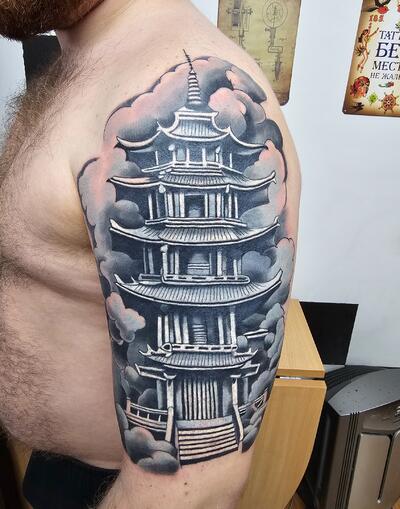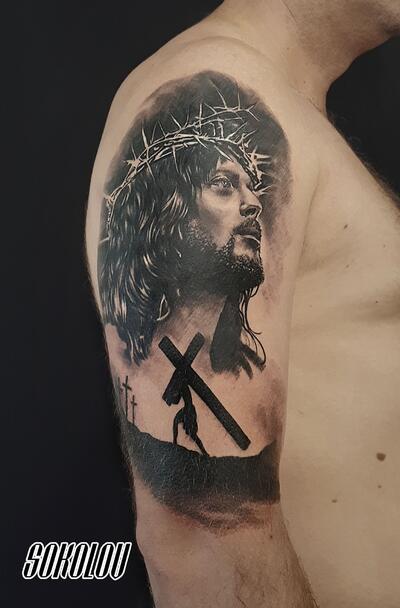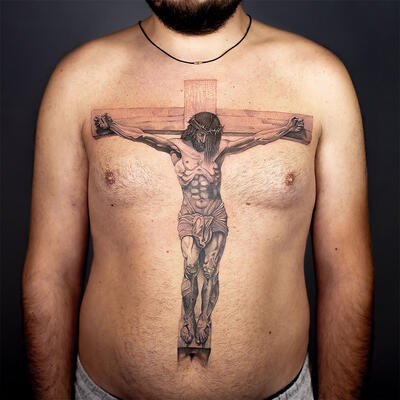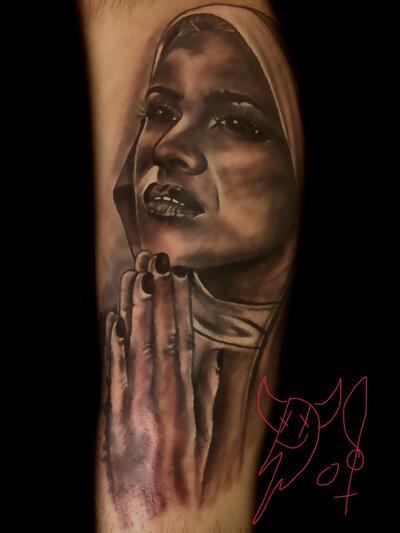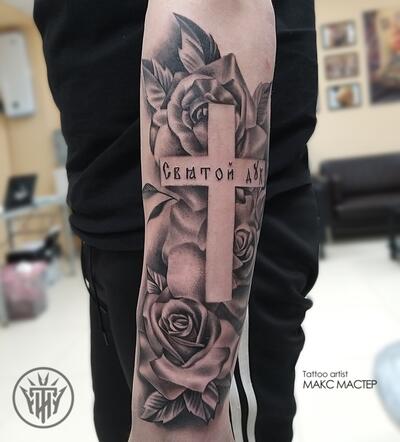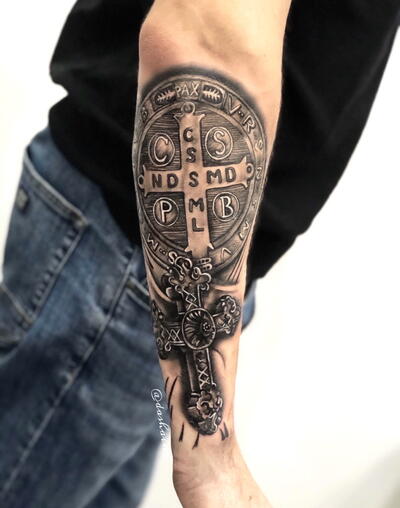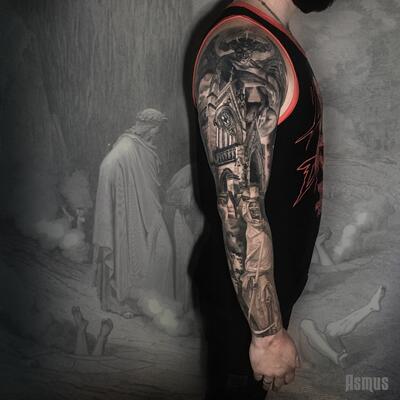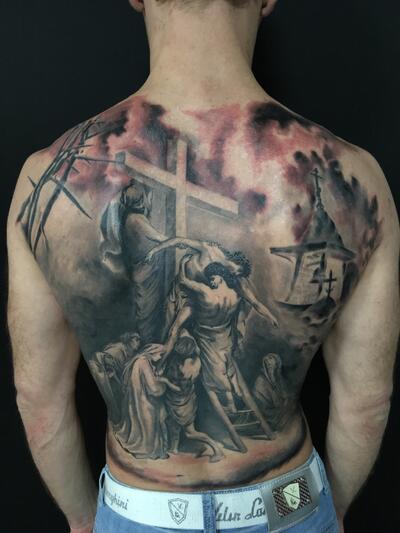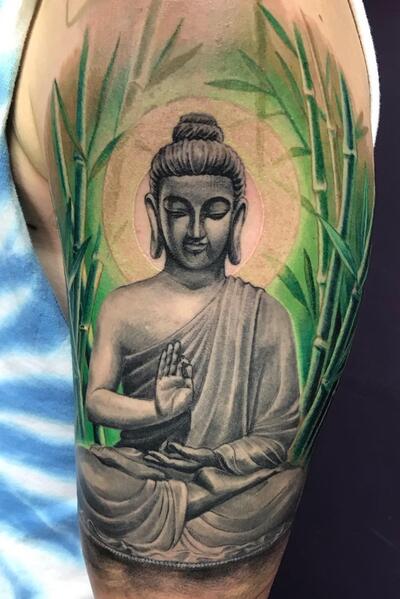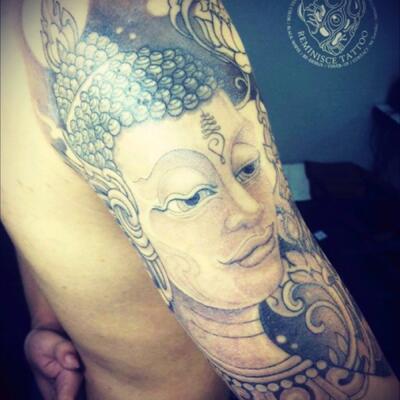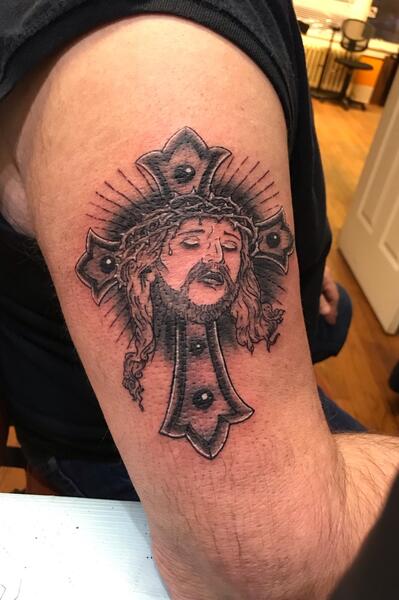Religious tattoos: features and varieties.
Tattoos that carry a religious meaning are quite a serious art form. After all, such tattoos expose the inner world of a person to others, tell about his beliefs and the power of faith.
Unlike generalized drawings, religious tattoos show not only a person's religious commitment, but also forever determine his ethnicity for those around him. In a sense, the application of such tattoos requires more courage and constancy of the worldview from the wearer.
The origins of the direction. Catholicism.
Historians suggest looking for the starting point of the religious tattoos of the European branch in Catholicism. It was the adherents of the faith of Christ who were the first to mark human bodies with the sign of the cross. However, this was done not with the help of paint, but by means of a brand.
Today, the medieval brutality of Catholics is left behind, and the art of depicting religious motifs has reached perfection. You can express your participation in the Catholic faith today through such images as:
- A combination of rosaries and roses;
- The face of Christ with a crown of thorns;
- Madonna;
- Scenes from the Bible;
- Bible texts in Latin.
The most common such tattoos are among residents of Latin America. Here you can also find the most large-scale paintings and sketches with many references to biblical themes.
The Orthodox branch.
Christian tattoos are also reflected in the Orthodox faith. Most often, Orthodox believers decorate their bodies with stylized crosses, crucifixes. And they are usually placed on the shoulder. From larger-scale works, you can find images of Jesus Christ. Unlike the Catholic version, in Orthodoxy he is depicted not with a prickly crown, but with a shining halo.
The image of the Archangel Michael is quite common. Many people fill portraits of patron saints. There are also images of churches and domes.
However, it is worth considering that these tattoos are perceived exclusively in prison context.
Mexican tattoos
The religious theme of tattoo art in Mexico is inextricably linked with the chicano style. Mexican religious tattoos have absorbed the ideas of faith that have developed in the American Catholic environment. The bulk of the sketches contain variations on the theme of the rose and the Madonna. Sometimes the Holy Virgin is depicted with a baby.
The features are in the style of the Mexican image of familiar images. The chicano tattoo invented by the Mexicans has become popular all over the world. But in Mexico itself, the style is closely associated with the religious and gangster world. Intertwining, both plot lines gave rise to a new recognizable direction. In addition, you can distinguish chicano by such nuances:
- In the sketches, the theme of religion is necessarily combined with the theme of crime;
- The paintings express suffering and hope;
- Madonna's face always has colorful Mexican features.
Chicano-style images can be either monochrome or full-color. The main emphasis is on drawing details and clarity of lines.
Muslim tattoos.
Muslims, like Buddhists, do not prohibit, but also do not encourage tattoos. There are no references to the need to decorate your body with tattoos in the holy book of Muslims. But if desired, representatives of the Islamic world fill themselves with images of the crescent moon or quotes from the Koran.
However, it is impossible to fully attribute them to the category of religious tattoos. Since it is rather a tribute to the ancient Arab culture. And the desire to emphasize the sense of patriotism.
Judaism is orthodox and secular.
Tattooed Jews can be found much less often than representatives of other faiths. This is due to the fact that tattoos in Judaism are not encouraged in the same way as working on Saturdays or eating pork. Among Orthodox Jews, body drawings are not found at all. But Jews who lead a more secular lifestyle can afford to deviate from the rules.
Sketches of religious tattoos in Judaism contain excerpts from the Torah, made certainly in Hebrew. The image of the Star of David and other cultural and religious attributes is also widespread.
Tribes, Eastern peoples and bygone beliefs.
A separate line should be mentioned about the tattoos of representatives who share the views of Eastern philosophy. Today, they are among the most tattooed in the world. At the same time, the vast majority of drawings have a spiritual, sacred meaning.
In part, tattoos of African tribes and Indians have a religious significance. As a rule, they draw totem animals that are important to them on the skin. There are also often patterns that bring good luck.
Images of Slavic and Scandinavian motifs have become one of the most popular trends reflected in polytheistic religions today. Runes, ornaments, stylized images of gods – all this is regarded as a tattoo amulet and is actively used as independent subjects or parts of more complex paintings.
